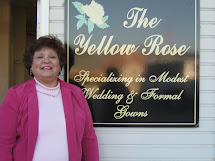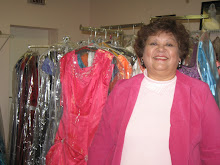After picking your dress, one of the most important aspects of wedding day finery is a veil. The right veil for you should compliment your wedding theme and retell your fashion story. Most bridal ensembles are not complete without a headpiece of some sort. If your wedding theme is a whimsical and fresh party, there is a wedding veil style for you. If you are planning the elegant wedding soiree, there is also veil to complete your look. Wearing a veil is an item that can set your apart from a lovely girl wearing a lovely dress to truly commanding the center of attention as a bride.

There are six general types of veils
1. Fingertip veil. This is one of the most timeless and popular style of veil. This veil suits many dress styles and body types. It is normally very lightweight and can be worn with various hairstyles. This style often has a blusher attached. A blusher is a short front piece on a veil that goes over the face during a ceremony.
2. Cathedral veil. This veil type is the most dramatic of all veils. It is often paired with a more ornate tiara and worn with the most formal of dresses. Think of Princess Diana (but don’t think of the disastrous demise of her marriage), and her opulent gown; she wore a 25 foot veil.

3. Birdcage/net pouf veil. Brides who choose to wear this style of veil usually have very structured or sophisticated wedding dress. This style of veil is reminiscent of the
1940s and a more retro style of dressing. Birdcage veils have been making a comeback
in a very big way, so if you are looking for a very “of the moment” wedding style, try
experimenting with this style of veil.

4. Flyaway veil. A flyaway veil is a shorter, fuller veil that stops below the chin and above the shoulders. It is a very youthful and fun style of veil. It is especially complimentary to a tea length wedding gown or a more casual style of wedding dress or a dress with a bow or other details down the back.
5. Mantilla veil. If you are a Latina, or secretly want to be a Latina, this is the veil for you. A mantilla is a very traditional Spanish style veil. It is a very elegant headpiece and it evokes a theatrical mood. It can look best with a lace style dress or a very simple gown.
6. Waterfall veil/angel cut veil. This is style of veil that frames and highlights the face and has a cascade effect down your back. This works well with dresses that are highly embellished or have a long row of buttons. A dress that is highly structured can be softened with a waterfall veil.
Other important things to note about veils:
1. Match your whites. It will be very obvious if you have a white veil and an ivory dress.
2. Don’t be afraid to try on several styles of veils to find what is most complimentary to you. Just like shopping for your gown, it may take a lot of trial and error before you find “the one”. Don’t think that just because you’ve found your dress that any old veil will do.
3. Keep tiara gemstones and other embellishments all in the same family. If your dress is adorned with pearls, it will often look best if your tiara or veil is trimmed in the same type of stone.
4. Don’t let your veil become distracting to your wedding day ensemble. When people look at the bride, that’s what they need to see, not piles and piles of extra things making your look weighted down and costumey.
Don’t be afraid to NOT commit. If you’ve tried all sorts of veils or tiaras and you would prefer to not wear one, go for it. You will always look your best if you wear what feels best.












